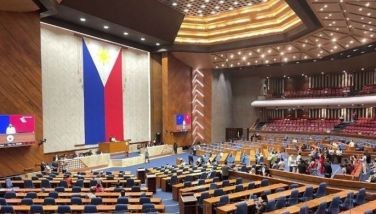Nuclear science, not nuclear power for Philippines – IAEA head
MANILA, Philippines - The head of the International Atomic Energy Agency (IAEA) said that while the Philippines was not harnessing nuclear power to attain cheaper electricity, it was apparently tapping nuclear science to get benefits in other fields.
IAEA director general Yukiya Amano saw projects of the Department of Science and Technology’s Philippine Nuclear Research Institute (DOST-PNRI), noting R&D efforts on nuclear science in fields such as agriculture, food processing, health sciences, and water.
“The Philippines is a very important part of the IAEA today,” Amano, whose visit last month was his second in the country, said in a forum at the PNRI office in Quezon City.
“You are doing very important activity in various fields,” Amano said.
Amano noted that more importantly, the Philippines was generous in sharing the knowledge generated by R&D efforts with other country members of the IAEA.
The Philippines has been a member state of the global nuclear agency since 1958.
The Philippines is playing a leading and pioneering role in a global effort that taps nuclear science to provide better access to clean and safe drinking water under the IAEA’s Water Availability Enhancement (IWAVE) project.
Dr. Alumanda dela Rosa, director of PNRI, said that the Philippines, through the PNRI in collaboration mainly with the National Water Resources Board (NWRB), was the first member-state of the IAEA to participate in the project that uses isotope hydrology techniques to determine the quality and quantity of groundwater in selected areas and regions.
Oman and Costa Rica have since also participated in the IWAVE.
Under the project, the IAEA aims to build the capacity of member-states and assist them in gathering and using scientific information to fully assess the availability and quality of water resources, contributing to the United Nations Millennium Development Goal of halving the number of people worldwide without access to clean drinking water.
In their Groundwater Resources and Vulnerability Assessment of the Philippines plan for the IWAVE project, the PNRI, the NWRB and the Department of Environment and Natural Resources’ Mines and Geosciences Bureau will collaborate on the design and application of isotope hydrology techniques with data analysis and interpretation on water resources in Regions 2 and 10 through a technical contract.
The project will cover the provinces of Cagayan, Isabela, Nueva Vizcaya, and Quirino province in Region 2, and Bukidnon, Misamis Oriental, Dinagat Islands, Surigao del Norte, Agusan del Sur and Agusan del Norte in Region 10.
- Latest





























